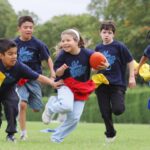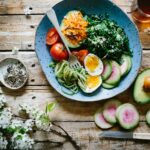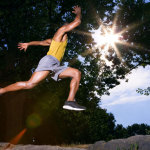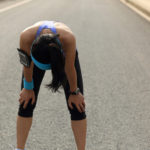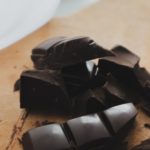What are Electrolytes?
When one of my clients entered my office holding a Gatorade at 9:00 a.m, and mentioned he wouldn’t be training until 2:00, I wondered why he was sipping a sports drink right then. His response“For the electrolytes—not that I even know what electrolytes are…!” Like many of my clients, this runner was confused about electrolytes: Did he need them? How to replace them? Are engineered sports foods the best sources? If you are also confused about this topic, keep reading!
What are electrolytes?
Electrolytes are electrically charged particles that help the body function normally. Some of the more familiar electrolytes include sodium, potassium, calcium and magnesium.
Calcium and magnesium help muscles contract and relax. Sodium and potassium help water stay in the right balance inside and outside of cells. Sodium is the electrolyte lost in the highest concentration in sweat.
Do active people need extra electrolytes?
If you are a fitness exerciser, you are unlikely to need extra electrolytes to replace those lost in sweat. If you exercise hard for more than four hours in the heat (such as triathletes, marathoners and even tennis players), you may benefit from replacing sodium losses, particularly if you sweat a lot or have been consuming only plain water or even a standard sports drink. In that case, salty recovery snacks could be a smart choice—particularly if you are prone to muscle cramps.
Potassium deficiency is unlikely to occur in athletes because the body contains much more potassium than even a marathoner might lose during a hot, sweaty race. Never the less, you can rule out this issue by enjoying potassium-rich fruits and vegetables (oranges, bananas, raisins, potato) and dairy (milk, yogurt). You can easily replace the 200 to 600 milligrams potassium you might lose in an hour of hard training by snacking on a medium to large banana (450-600 mg potassium).
To consume the electrolyte calcium, plan to include calcium-rich foods each day, such as (soy) milk+cereal, yogurt, a (decaf) latte. For magnesium, as often as possible, enjoy a pile of magnesium-rich green leafy vegetables, as well as whole grains, nuts, peanut butter, dried beans and lentils.
Who needs to worry about replacing sodium?
Not many people! When you exercise, you lose some sodium via sweat, but you are unlikely to deplete your body’s stores under ordinary conditions. Problems arise when people overhydrate during exercise with too much plain water or standard sports drink. The very small amount of sodium in a sports drink is added to enhance fluid retention, not to replace sodium losses.
The concentration of sodium in your blood actually increases during exercise because you lose proportionately more water than sodium. Hence, your first need is to replace the fluid. You can easily replace the 800 mg sodium lost in two pounds of sweat during a hard hour-long workout by enjoying a recovery snack of chocolate milk and a bagel with peanut butter.
Keep in mind, most health organizations recommend we reduce our sodium intake because the typical diet contains too much sodium for the typical person who is unfit, overfat and at risk for high blood pressure and stroke.
I am training for an Ironman triathlon. Should I consume extra sodium?
After extended sweaty exercise, you should plan to replace sodium if—
1) you are craving salt, and
2) you are covered with a layer of salt on your skin.
Many tired athletes report the salt helps revive them so they feel better. Plus, it helps with rehydration because it holds water in your body.
You can also consume salty foods, such as chicken broth or ramen noodles before extended sweaty exercise, so the sodium will be in your system helping to retain fluid and maintain hydration. Experiment with consuming pre-exercise sodium during training. Some athletes complain of intestinal upset or heaviness. You are an experiment of one!
Assuming the longer and harder you exercise, the hungrier you’ll get and the more sodium-containing foods and fluids you’ll eat—and easily consume more than enough electrolytes during and after the workout. Standard snacks (yogurt, bagels) and meals (pizza, pasta) have more sodium than you may realize. Nibbling on olives, pickles, crackers & cheese can easily replace sodium losses. (See the table below and read food labels for sodium content.) As for potassium, chugging 16-ounces of chocolate milk for a recovery drink more than replaces the potassium a marathoner might lose.
What about commercial sports foods with sodium?
If you are tempted to replace sodium losses with commercial sports foods and fluids, note that most of these engineered products are relatively poor sources of sodium. (See the table below.) Some frugal ultra-distance athletes simply lick a small packet of salt from their palm or suck on a boullion cube. Tastes great if you crave it!
Sodium in Popular Recovery Foods
| FOOD | SODIUM (mg) |
| Chicken noodle soup, 1 can Campbell’s | 2,350 |
| Pizza, 1 small Domino’s cheese | 2,330 |
| Ramen noodles, Maruchan, 1 packet | 1,580 |
| Spaghetti sauce, 1 cup Ragu | 1,160 |
| Boullion, 1 cube Herb-Ox Chicken | 1,100 |
| Salt, 1 small packet | 590 |
| Pretzels, 1 oz (30 g) Rold Gold thins | 560 |
| Bagel, 1 Thomas’ New York style (3.7 oz) | 540 |
| V-8 Juice, 8 ounces | 480 |
| American cheese, 1 slice Kraft | 250 |
| SaltStick capsule, 1 | 215 |
| Cheerios, 1 cup multigrain | 200 |
| Yogurt, 6 oz Stonyfield Farms vanilla | 115 |
| Bread, 1 slice Pepperidge Farm hearty slices | 190 |
| Saltine crackers, 5 | 180 |
| Potato chips, 20 Lay’s | 180 |
| Chocolate milk, Nesquik, 8 oz | 150 |
| Gatorade, 8 ounces | 110 |
| Endurolytes (electrolytes), 1 capsule | 100 |
| Powerade, 8 ounces | 70 |
| Beer, 12 ounce can | 15 |
| Coke, 12 ounce can | 10 |
| Orange juice, 8 ounces | 5 |
| POTENTIAL LOSS IN A 2 HR WORKOUT | 1,000-2,000 |
This article has been provided by Nancy Clark, MS, RD, CSSD (Board Certified Specialist in Sports Dietetics) who counsels both casual and competitive athletes in her practice at Healthworks, the premier fitness center in Chestnut Hill MA (617-383-6100). Her Sports Nutrition Guidebook and food guides for new runners, marathoners, cyclists and soccer players are available at www.nancyclarkrd.com. See also sportsnutritionworkshop.com.

